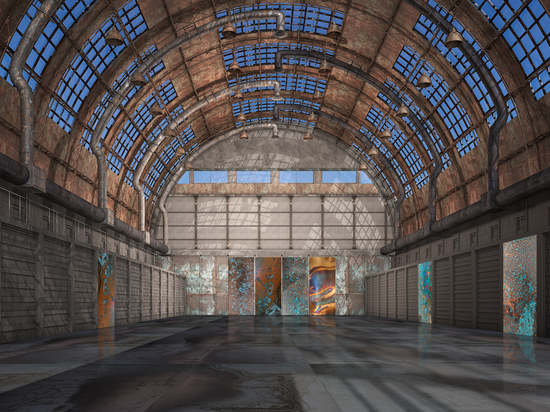
#Product Trends
All the colors of Calamine
Calamine has been the best-selling Planium metal of recent years
Calamine has been the best-selling Planium metal of recent years and from an aesthetic point of view it is easy to understand the reasons. Architects and others - in general those interested in Interior Design - are looking for this ferritic material, the result of oxidation due to its variable and unpredictable color scheme which makes it unique on the market.
How many and what are the different colors that this "mysterious" material includes in its many and unpredictable shades?
Anthracite Gray
One of the dominant colors in Calamine is Anthracite, a particular type of gray with a dark and leady hue that takes its name from a coal. In addition to the Pantone experts, it is a color appreciated in the world of fashion because of the tailored men's suits, ideal for formal occasions.
Air Force Blue
Blue is the color that Pantone Institute has declared trendy for 2020, and Calamine certainly does not exempt itself from containing it. The shade of Blue that belongs to this metal is Air Force Blue, which takes its name from the historic color of the aviators' uniforms, including those of the Luftwaffe and the Royal Air Force and which has a gray undertone.
Magenta Red
Calamine never ceases to amaze and surprise: among the cold and "nocturnal" tones that play between the grays and blues, there is also room for a very particular primary color, Magenta Red, which in this metal is not it manifests with "strength" but with subtlety, by nuances, almost to accompany it; the name of this color is presumably due to the historic battle.
Blue Sugar Paper
More than one shade of Blue is contained in the Calamine, which does not only include the dark ones: in the overall view of the slab, in fact, the sugar paper color is also evident, which is a light Blue, almost a Blue, which takes the name from the color with which the papers to pack products such as tobacco and sugar were "blued" already in the 1600s, even if the term was born in 1892. It was the first color for packaging, therefore also one of the first to to be a protagonist in what we now call "marketing"; in Europe it has had a fortunate use in fashion since the 50s of the twentieth century, and has recently come back into vogue also for Interior Design.







